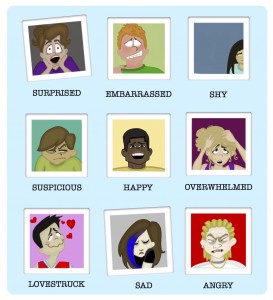Handling Intense Emotions

Hi. I am Dr. Curtis McMillen, a social worker, a Professor at the University of Chicago,and the developer of the Handling Intense Emotions curriculum. I have worked as a foster care case manager, in treatment foster care, group care and in in-patient psychiatric care. As a researcher, I have been studying how to help foster kids for 20 years.
A few years ago, I was running a treatment foster care team and our foster parents were overwhelmed with what we came to call emotion regulation problems. Teenagers were tantrumming like four year olds and sometimes for hours. They were hypersensitive to any feedback. They could erupt at any moment over any situation. Our behavioral programming was not handling these intense emotions effectively.
Our foster parents were at wits end and I was too. They wanted answers from me on what to do to make things better and I didn’t have them. I looked for helpful interventions we could bring into our program, examined several and tried some, but nothing seemed to fit the circumstances of kids in the foster care system and their substitute caregivers.
So I decided to create something from scratch. Luckily, I had the resources of the University of Chicago at hand. I hired some smart graduate students. We spent a couple of years thinking about this, digging through all the relevant literature we could find on affective neuroscience, emotions, and emotion regulation, talking to people who knew things we didn’t, and sharing our developing ideas with young people in the foster care system and the adults caring for them. Finally, we scripted and produced a curriculum we hope will help. It is designed to reduce the number and intensity of emotional outbursts young people experience and to help decrease the placement disruptions, property damage, adverse events, and hospitalizations to which these intense emotion episodes can lead.
Does it work? We don’t know. We have run some small pilots to refine the curriculum and see who reacts best to it, but it has not been subject to a randomized trial. Randomized trials with youth in foster care or congregate care are tough to mount and we may not have one for a while, if ever.
On this website, you can learn about the curriculum we created, discover some of the things we found out about emotion regulation and keep updated on our efforts to find out whether our curriculum will work or not. Eventually, this will be the website where you can download the curriculum, once it is ready to distribute.
More About the Handling Intense Emotions Curriculum
Handling Intense Emotions is a flexible multi-media program. To add even more jargon, it is a blended intervention. It educates youth and caregivers about the realities of intense emotions, why people have them, and how intense emotion episodes start and stop. And, it teaches young people and their caregivers a bunch of things to try to better handle intense emotions.
Who is it for? Handling Intense Emotions is designed for multiple learners:
- youth (ages 13-20) in foster care or residential programs who experience intense emotions that make it difficult to care for them and put placements at risk. (Our piloting suggested that younger youth were more likely to appreciate the program than younger youth).
- their caregivers, including foster parents, relatives and direct care staff in residential programs and group homes.
- and their clinicians.
How is it delivered? We refer to the program as a blended intervention because it is designed to mix e-learning (via the web) and interaction with a facilitator. The facilitation can be in groups or done individually, given the circumstances of the learner and facilitator. The learner is asked to watch and listen to short chunks of electronic media. Then, a facilitator follows up with questions and tasks that are designed to assess comprehension, help learners apply the knowledge gained to their situations, and to practice skills.
Credit where credit is due
The rights to the Handling Intense Emotions are owned by the University of Chicago, who will license its use, once we are ready to disseminate it.
Input into the program was provided by staff and youth at Lawrence Hall at several points in time. Then, Lawrence Hall agreed to pilot the curriculum through several innovations and even helped write grants to get this work off the ground. They have been a great partner!
The scripts for the intervention were written and produced by Curtis McMillen, Emily Claypool, Savannah Felix, Jazzalyn Lamadora, Andy Wheeler and Mercedes Williams. Andrea Kampfner was the primary illustrator for the curriculum. All of these folks, except me, were students in the School of Social Service Administration at the University of Chicago at the time of their contributions.